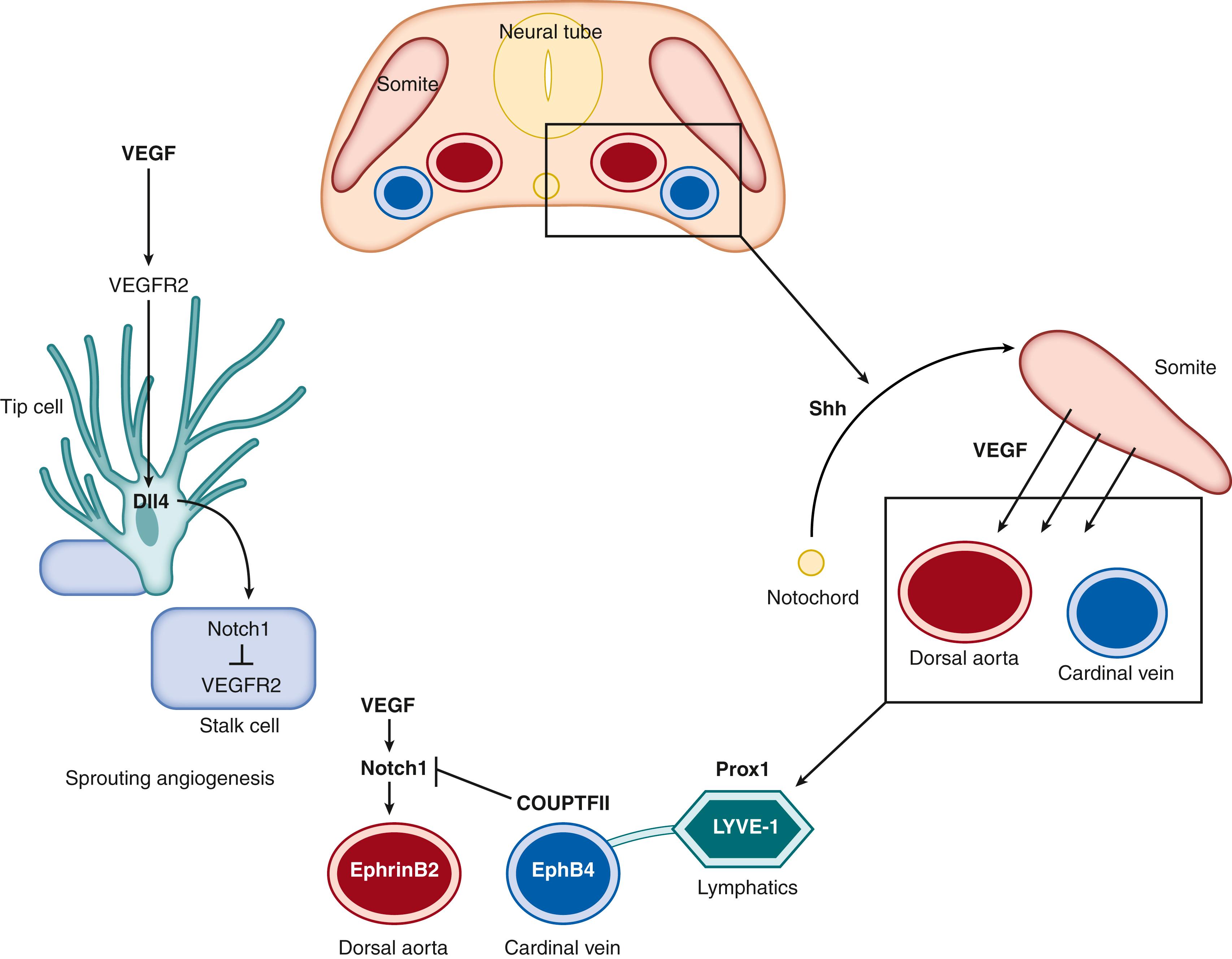Physical Address
304 North Cardinal St.
Dorchester Center, MA 02124
Embryologically, the cardiovascular system is the first to develop. The vasculature, composed of endothelial cells and their support cells, is critical not only for circulation of blood, but also for the organization, maintenance, and regeneration of multiple organ systems. The embryo forms a primary vascular plexus so that blood vessels first arise through a process called vasculogenesis. Further vessels are generated via sprouting and nonsprouting angiogenesis and are progressively remodeled into a functional circulatory system.
Vasculogenesis includes the differentiation of angioblastic progenitors from mesenchymal cells and their subsequent organization into primitive channels. This initial process differs from angiogenesis, which refers to the formation of new vessels from existing vessels. The first vascular structures to form emerge in the extraembryonic yolk sac, where mesodermal cells differentiate into angioblast precursors that quickly coalesce into uniform vascular structures. At the same time and place, rounded hematopoietic cells also appear from the yolk sac mesoderm. The coincident emergence of vessels and blood cells in the early embryonic yolk sac gave the impression that a common progenitor, termed the hemangioblast , was responsible for both hematopoietic and endothelial lineages. However, the early blood progeny has a limited repertoire and is not capable of long-term adult hematopoiesis. The first hematopoietic stem cells capable of adult engraftment arise later in development from endothelial precursor cells, which are called hemogenic endothelium . The angioblasts of the yolk sac coalesce to form a vascular network that is later remodeled. However, the intraembryonic vessels arise from another vasculogenic pool of mesodermal precursors. Within the embryonic mesoderm, angioblast precursors initially form bilateral aortic cords that fuse to form the dorsal aorta, and the rostral bifurcations become the cranial and subclavian vessels, whereas the caudal bifurcation results in the iliac vessels. The terminal expansions of these vascular networks organize an even-sized vascular plexus that later remodels extensively into a hierarchic tree of characteristic arteries, capillaries, and veins.
Angioblasts from the lateral plate mesoderm in the embryo are arranged in a mirrored fashion, where somite-derived growth factors initiate angioblast specification and formation of paired dorsal aortae. Sonic hedgehog (Shh) signaling is initiated in the midline notochord and endoderm to promote somite induction of vascular endothelial growth factor (VEGF), which is secreted for proper localization of angioblast precursors. The aortae remain paired due to antiangiogenic factors secreted by the intervening notochord. These include bone morphogenic protein (BMP) antagonists, as well as negative cues from semaphorins and netrins, imperative to axon guidance. BMP antagonists also play a role in vascular patterning and give the stereotypic structure characteristic of the vascular tree. Negative signals from semaphorins also feedback in VEGF signaling, helping to orchestrate vascular patterning. The paired aortae then fuse as midline notochord BMP antagonists are decreased in a rostral to caudal fashion, allowing for the convergence of the paired dorsal aortae into one large aortic vessel ( Fig. 6.1 ).

Become a Clinical Tree membership for Full access and enjoy Unlimited articles
If you are a member. Log in here